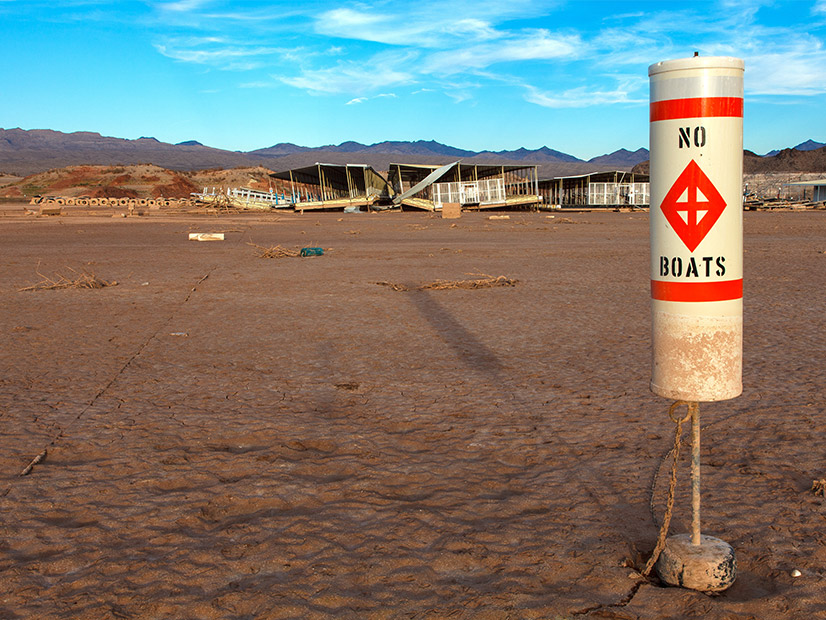President Biden said Saturday he will stand behind the $1.2 trillion infrastructure package the White House negotiated with a bipartisan group of senators and sign it into law, whether or not it comes to his desk “in tandem” with party-line reconciliation bills enacting more provisions of his climate and domestic agenda.
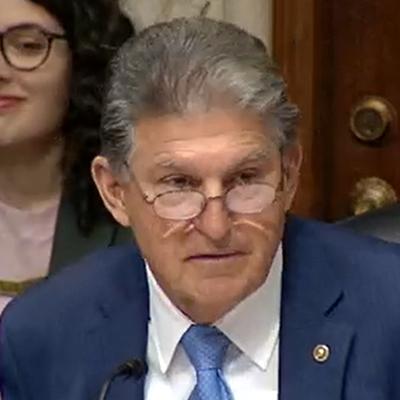
In a statement released by the White House, Biden pulled back from his apparent veto threat during Thursday’s announcement of the deal when he said: “If [the bipartisan deal] is the only thing that comes to me, I am not signing it. It’s in tandem.”
Biden walked back his comments after Republicans complained they were blindsided by them.
The president said that he intends to pursue the passage of the deal “without reservation or hesitation.” But, he said, “our bipartisan agreement does not preclude Republicans from attempting to defeat my [American] Families Plan; likewise, they should have no objections to my devoted efforts to pass that Families Plan and other [clean energy] proposals in tandem. We will let the American people — and the Congress — decide.”
Sen. Mitt Romney (R-Utah) said on CNN’s “State of the Union” Sunday that he was satisfied by Biden’s clarification. “I think the waters have been calmed by what he said on Saturday,” Romney said.
The weekend saw both Biden and Sen. Joe Manchin (D-W.Va.) talking infrastructure, in the wake of the bipartisan deal and Manchin’s rollout, also on Thursday, of a 423-page “discussion draft” of infrastructure legislation encompassing energy, water, abandoned mine reclamation and wildfire management.
Introduced at a hearing of the Senate Energy and Natural Resources Committee, which Manchin chairs, the $95 billion Energy Infrastructure Act covers many energy and climate initiatives that the bipartisan framework will not. It would also be passed through the Senate’s “regular order” rather than the budget reconciliation process that Biden and some Democrats hope to use to pass climate and family legislation.
Perhaps trying to head off such a potentially divisive move, Manchin opened the hearing on Thursday by saying his bill “would deliver on the president’s American Jobs Plan in many big ways that can garner bipartisan support.”
“Although I don’t anticipate we will all agree on the size and scope of the investment … I think all my colleagues will agree that the areas within our jurisdiction are an important piece of the broader conversation about our infrastructure needs,” he said.
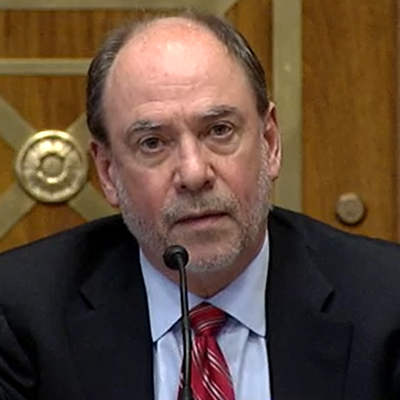
Sen. John Barrasso (R-Wyo.), the committee’s ranking member, was quick to criticize Manchin on drafting the bill without input from Republicans on the committee. He also criticized the bill’s funding — $45 million a year for 2022-2026 — to support upgrades for state building codes to promote energy efficiency, and $1 billion a year, for the same five years, for grants to help states undertake projects to improve grid resilience and reliability.
The funds for building codes could allow “the Department of Energy to coerce states to adopt building codes which may restrict the use of natural gas,” Barrasso said. He also labeled the grid improvement funds as a bailout for California. However, the bill makes no mention of building code restrictions on natural gas and stipulates that no more than 20% of the grid resilience funds could be used for projects in California.
Other provisions in the bill include:
- the creation of regional hubs to promote direct air carbon capture and green hydrogen technologies. Funding for the direct air hubs would be $3.5 million and for green hydrogen, $8 million, both over the next five years.
- improved permitting, both for the responsible mining of critical minerals, such as lithium, and for interregional transmission. On mining, the bill calls for collaboration by the Bureau of Land Management and the Forestry Service to establish “clear, quantifiable and temporal permitting performance goals and [track] progress against those goals.”
- to speed up transmission planning and permitting, FERC would be directed to open a docket on “the effectiveness of existing planning processes for identifying interregional transmission projects” and synchronizing “planning processes in neighboring regions.”
Heat Waves and Drought
The testimony of the five witnesses commenting on the bill fell similarly along party lines. Officials from the Energy, Interior and Agriculture departments all praised specific provisions of the bill but said higher levels of funding would be needed.

“We see this discussion draft as inspired by the American Jobs Plan,” said Kathleen Hogan, acting undersecretary for science and energy at DOE. Improvements to the bill could include “more flexible and larger state, tribal and local grants to advance clean energy throughout the country, greater supply chain investment beyond the battery and critical minerals sphere and more resources to help retool existing factories and [to] transition workers,” she said.
Douglas Holtz-Eakin, president of the nonprofit American Action Forum, a free-market research and policy group, said infrastructure funding should focus on “things that raise productivity. Focusing on those core infrastructure areas and avoiding spending money on things which will not raise productivity is probably a key design issue for this committee and Congress,” Holtz-Eakin said.
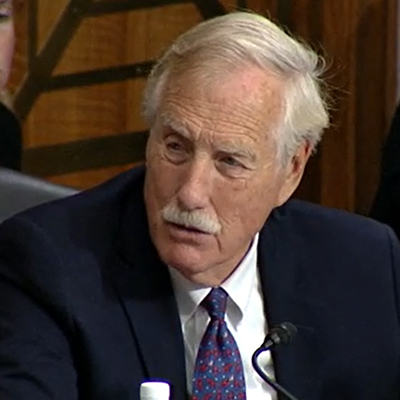
He pointed to spending on energy efficiency and school building upgrades as examples of nonproductive spending in the discussion draft and said infrastructure investments should come primarily from the private sector. Government investment gets “the incentives wrong … you also tend to run past the project selection criteria and invest poorly,” he said.
Sen. Angus King (I-Maine) answered Holtz-Eakin with a quote from President Abraham Lincoln, underlining the importance of public investment. “‘Time and experience have verified to a demonstration the public utility of internal improvements.’ In other words, infrastructure,” King said.
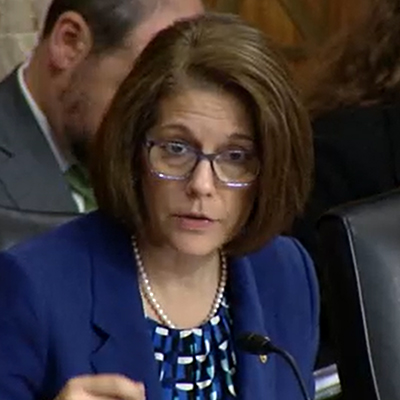
But senators on both sides of the aisle — and especially those from the Western states — were more preoccupied with the record-breaking heat waves and droughts now affecting their states, and how infrastructure investments might help mitigate the impacts. “The Colorado River basin is facing its worst hydrology on record, which could lead to its first ever shortage declaration this year,” Sen. Catherine Cortez Masto (D-Nev.) said. The drought is exacerbating wildfire risks, as well as cutting hydro power in the West.
Collin O’Mara, president and CEO of the National Wildlife Federation, said his organization estimates “we need almost $60 billion investment in our forests over the next five years. We also need a lot more resources for the Bureau of Land Management,” he said. “A lot of the fires that are starting right now are not starting in our forests. They are starting in our grasslands.”
A Tandem Deal
However, the discussion at the hearing and the prospects for the Energy Infrastructure Act were largely overshadowed by President Biden’s announcement of the bipartisan infrastructure deal.
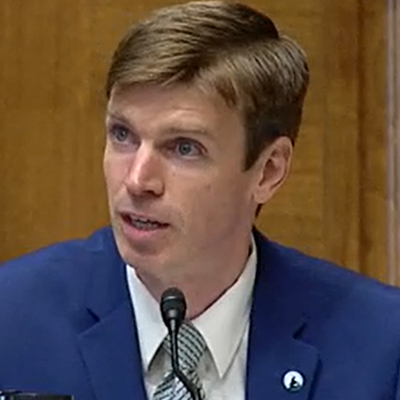
While only about half of the $2 trillion package Biden had originally proposed, the president focused on the “good-paying jobs” the deal would create. The price tag on the agreement is $973 billion over the next five years, going up to $1.2 trillion over eight years, according to a fact sheet released by the White House.
“This still makes key investments to put people to work all across the country building transmission lines, upgrading the power grid to be more energy efficient and resilient in extreme weather — to be able to sustain extreme weather and the climate crisis,” Biden said in a Thursday afternoon briefing. “It also builds our natural infrastructure — our coastlines and our levees — to be more resilient as well.
“American workers will be installing electric vehicle charging stations and undertaking critical environmental cleanups. This bipartisan agreement represents the largest investment in public transit in American history,” he said.
Specific spending over the next five years includes:
- $7.5 billion each for EV charging infrastructure and the electrification of buses and public transit;
- $73 billion for power infrastructure, including the creation of a Grid Authority, to build “thousands of miles of new, resilient transmission lines to facilitate the expansion of renewable energy”; and
- $43 billion for resilience to “prepare more of our infrastructure for the impacts of climate change, cyberattacks and extreme weather events.”
The response from energy industry organizations was mixed.
Paula Glover, president of the Alliance to Save Energy, praised the bipartisan efforts on infrastructure but noted the absence of energy efficiency in the deal. “[We] will continue to work with the administration and Congress to ensure energy efficiency policies are fully funded and seen as a top priority in future legislation,” she said in a statement released Thursday afternoon. Manchin’s bill got higher marks for its energy efficiency provisions.
While not directly commenting on the bipartisan framework, Jason Burwen, interim CEO of the Energy Storage Association, said, “An infrastructure bill that does not include clean energy and storage will fail to address the failings of our power infrastructure.” Manchin’s bill incorporates policy recommendations supported by ESA, Burwen said, such as funding to build out a battery supply chain.
“An infrastructure bill coupled with a storage investment tax credit will ensure that energy storage deployments accelerate to keep the lights on in the face of severe weather threats, cyberattacks and other catastrophic impacts to our country’s electric infrastructure,” he said.
An analysis from ClearView Energy Partners, an energy research firm, suggests that Manchin could be positioning his bill to be either incorporated into the bipartisan agreement as it is translated into legislation or as part of a party-line budget reconciliation bill.
Biden stated clearly that he sees the infrastructure agreement as the first part of a tandem deal. “If [the deal] is the only thing that comes to me, I’m not signing it,” he said. “It’s in tandem. … I proposed a significant piece of legislation in three parts, and all three parts are equally important.”
